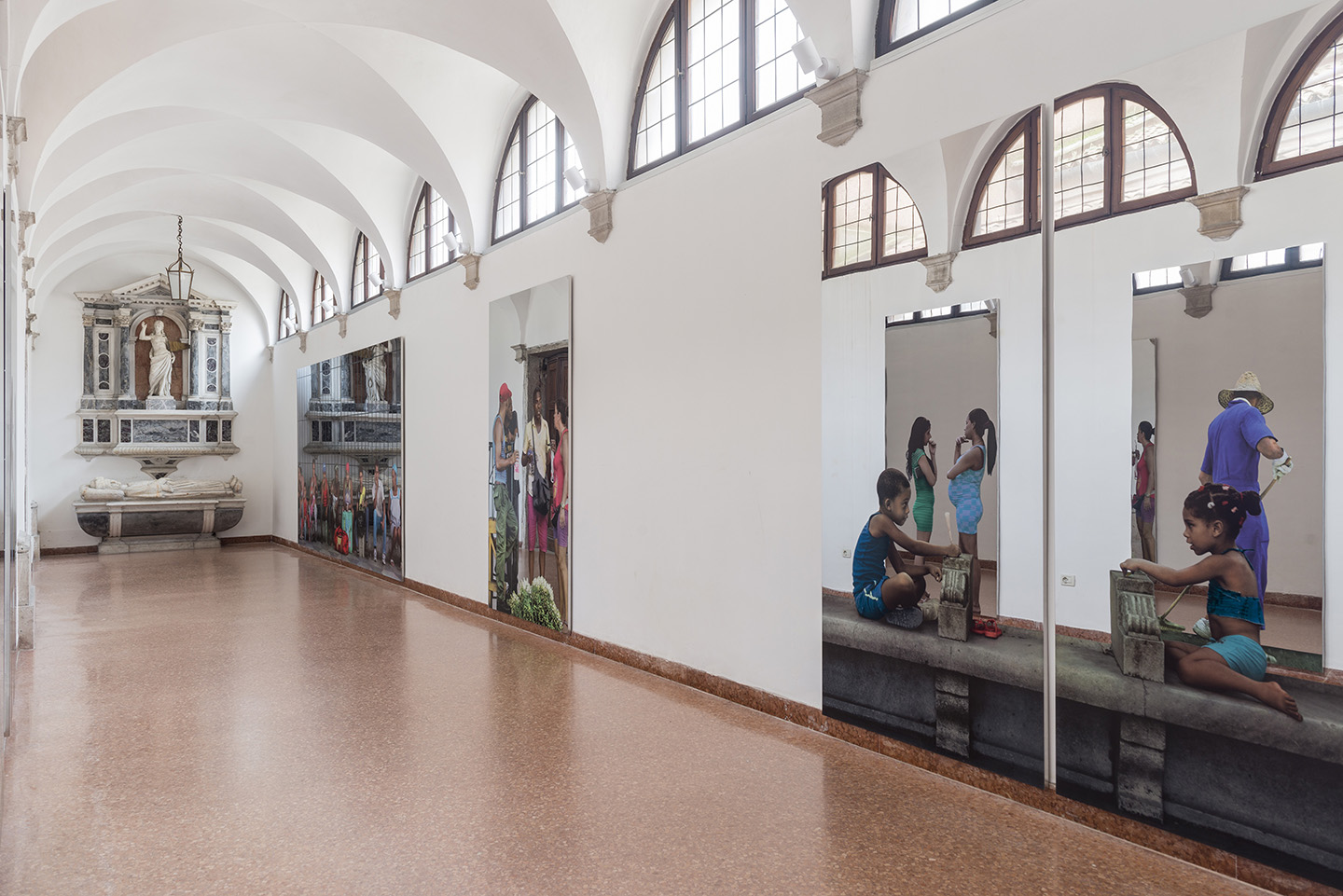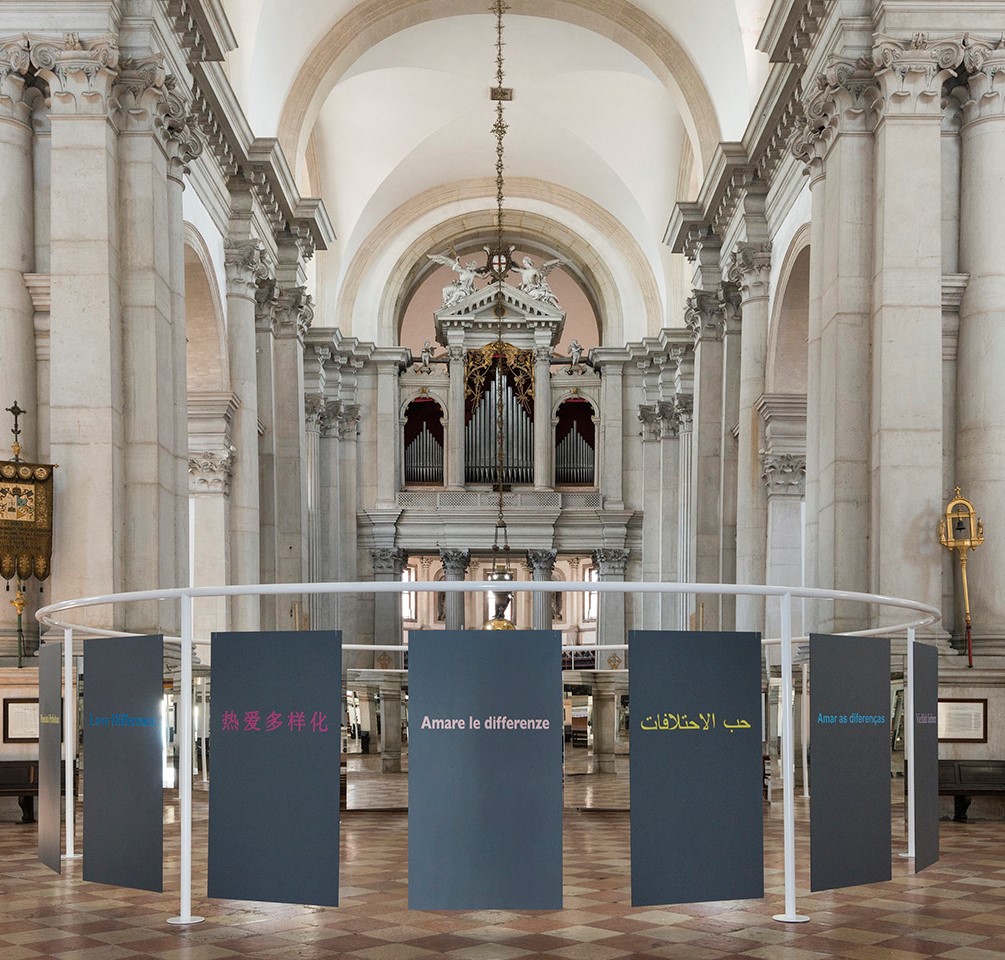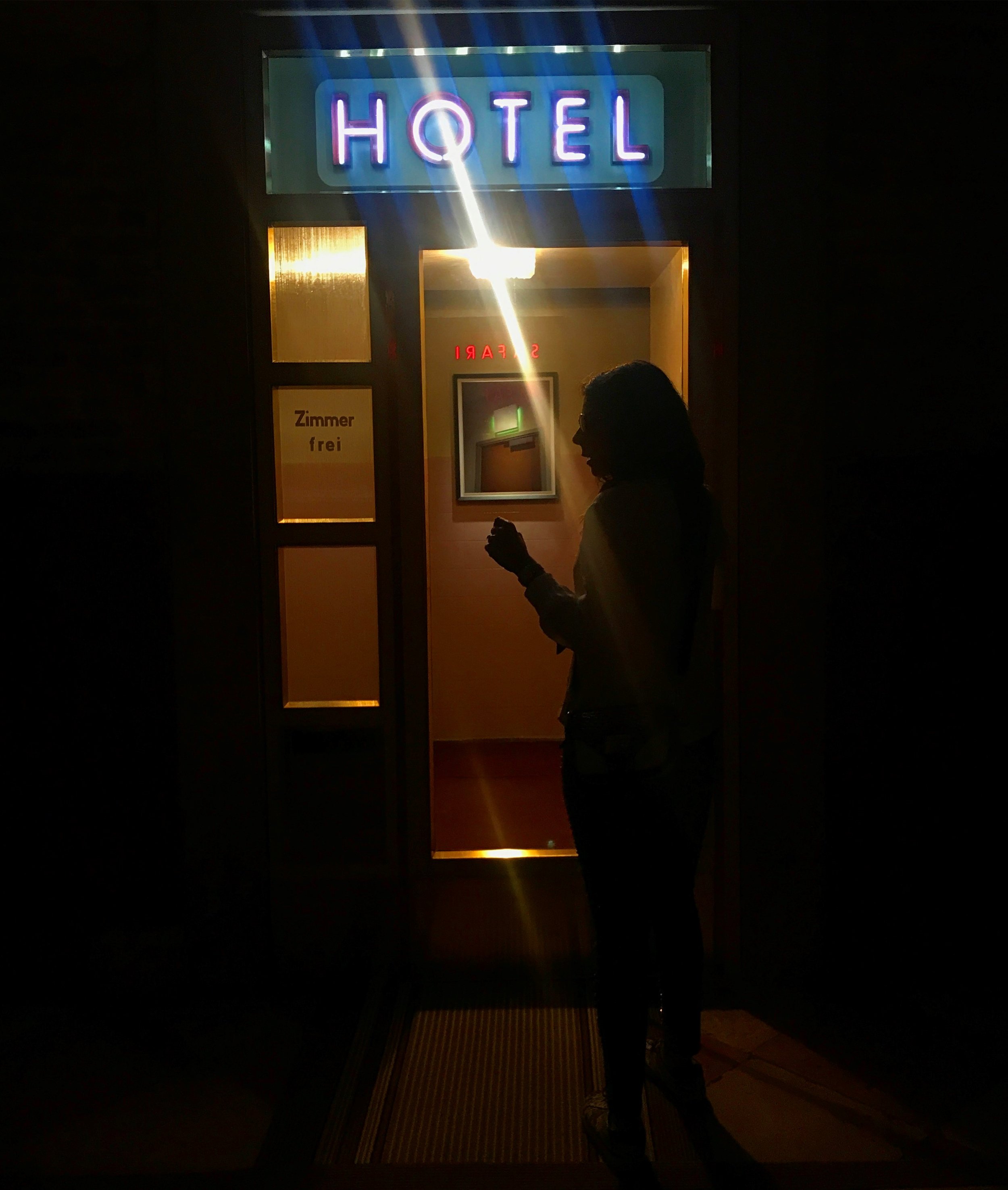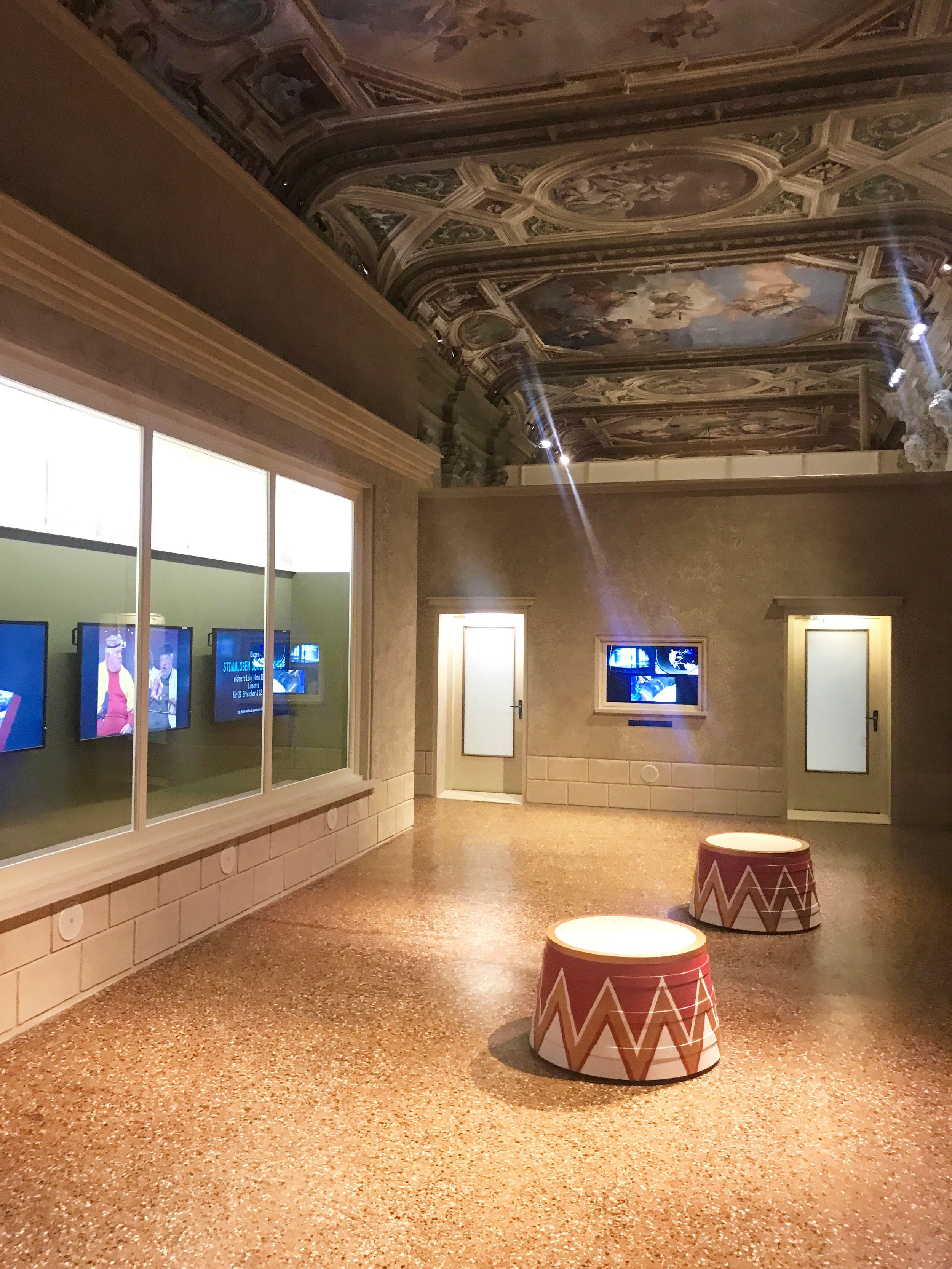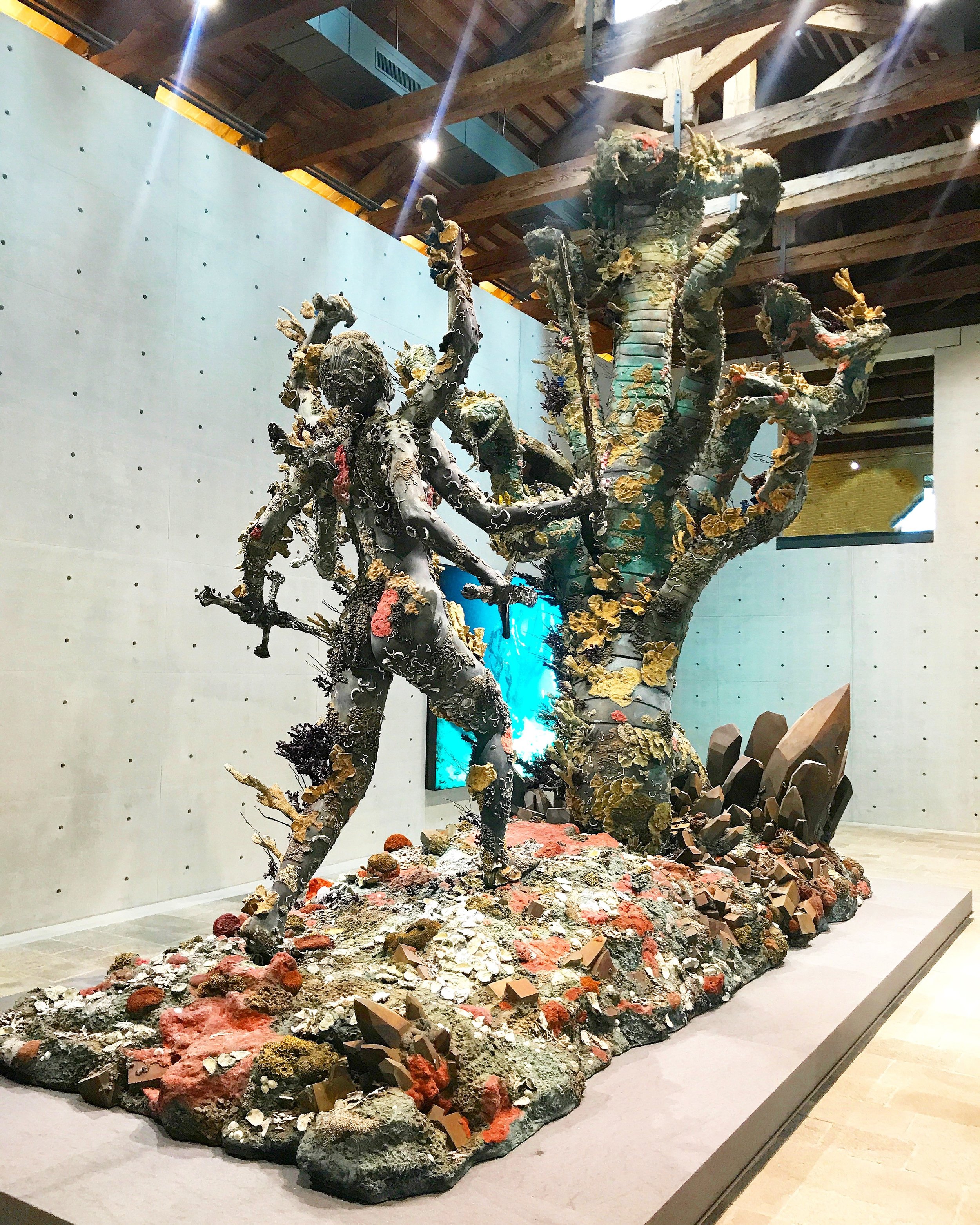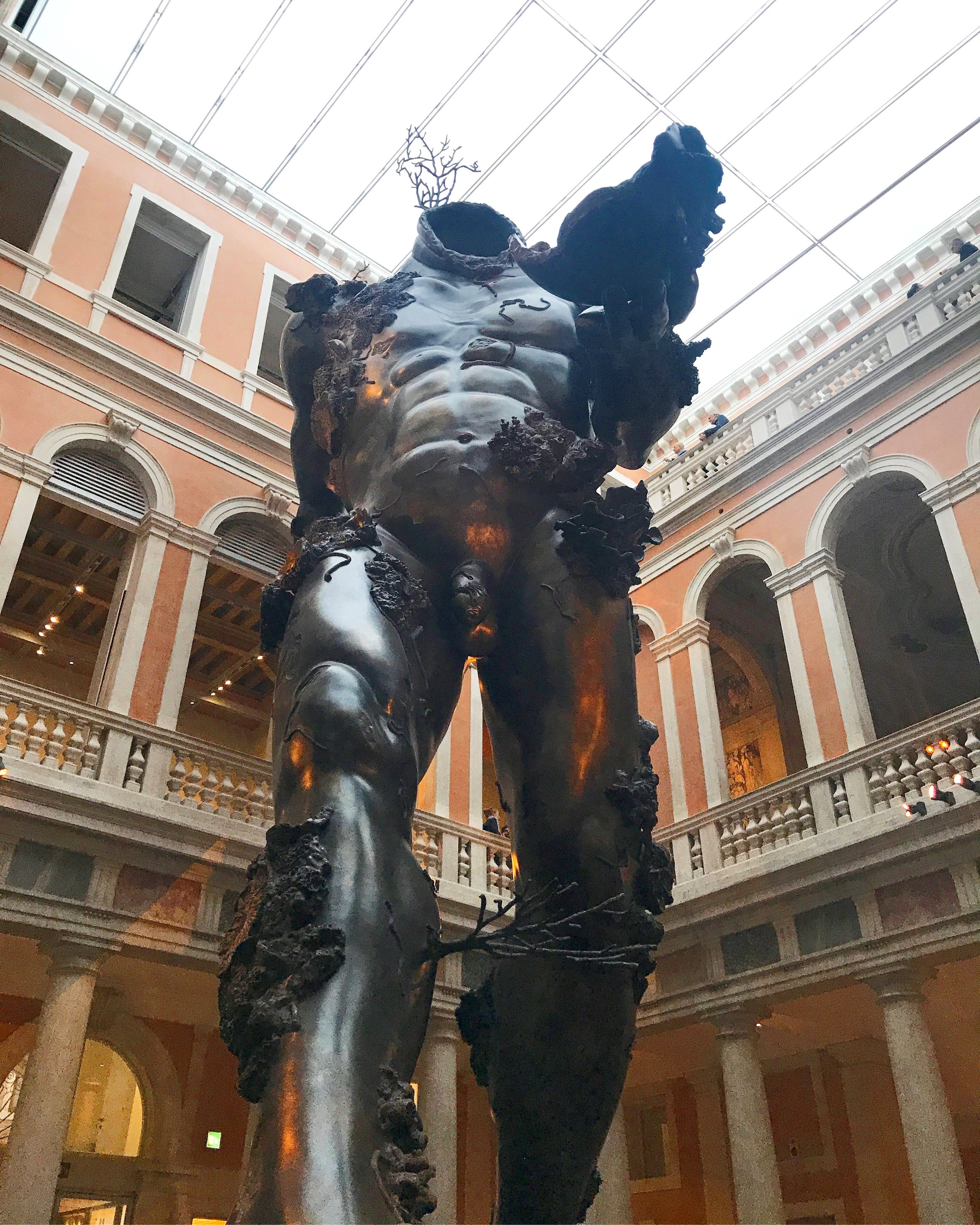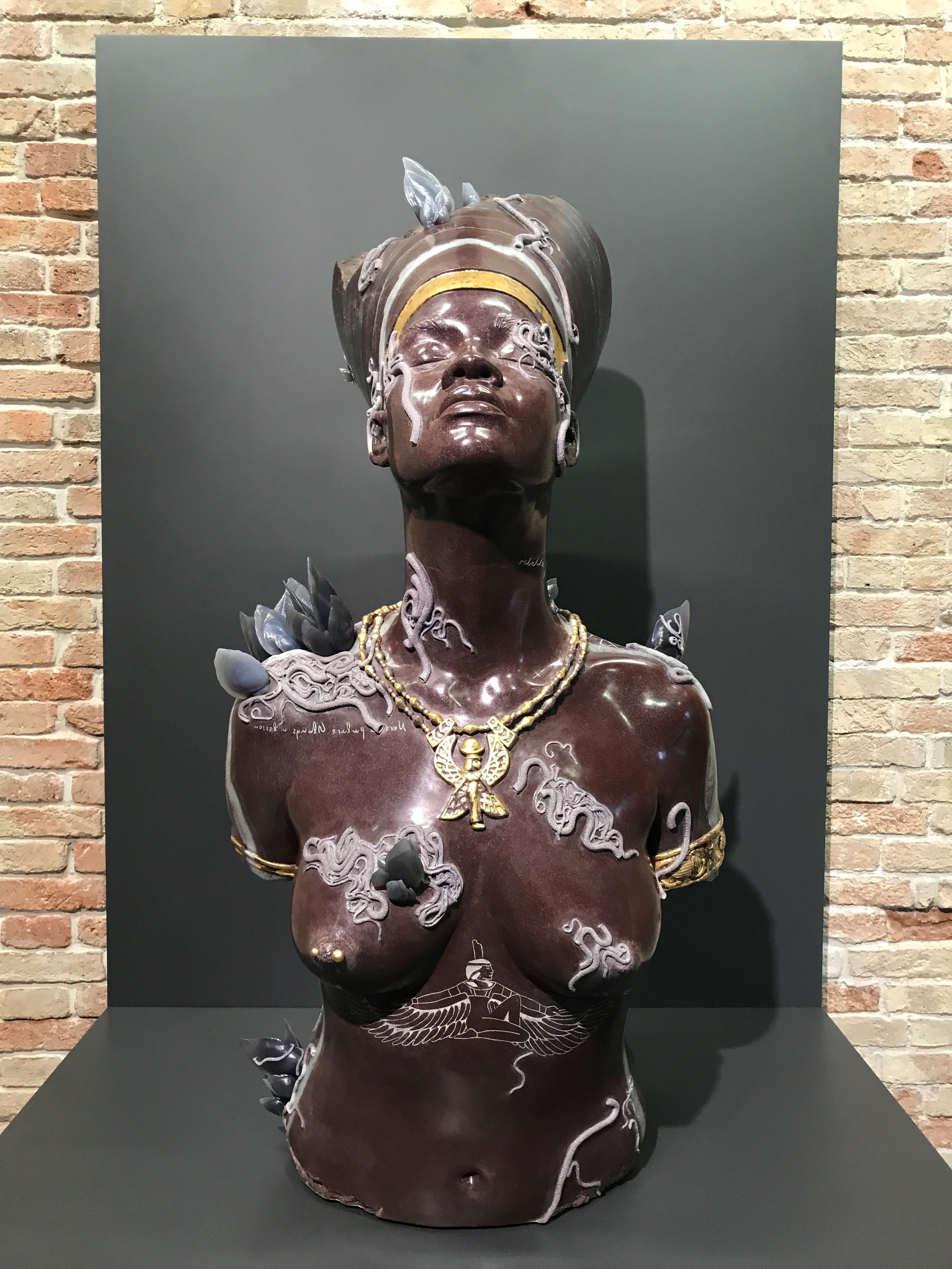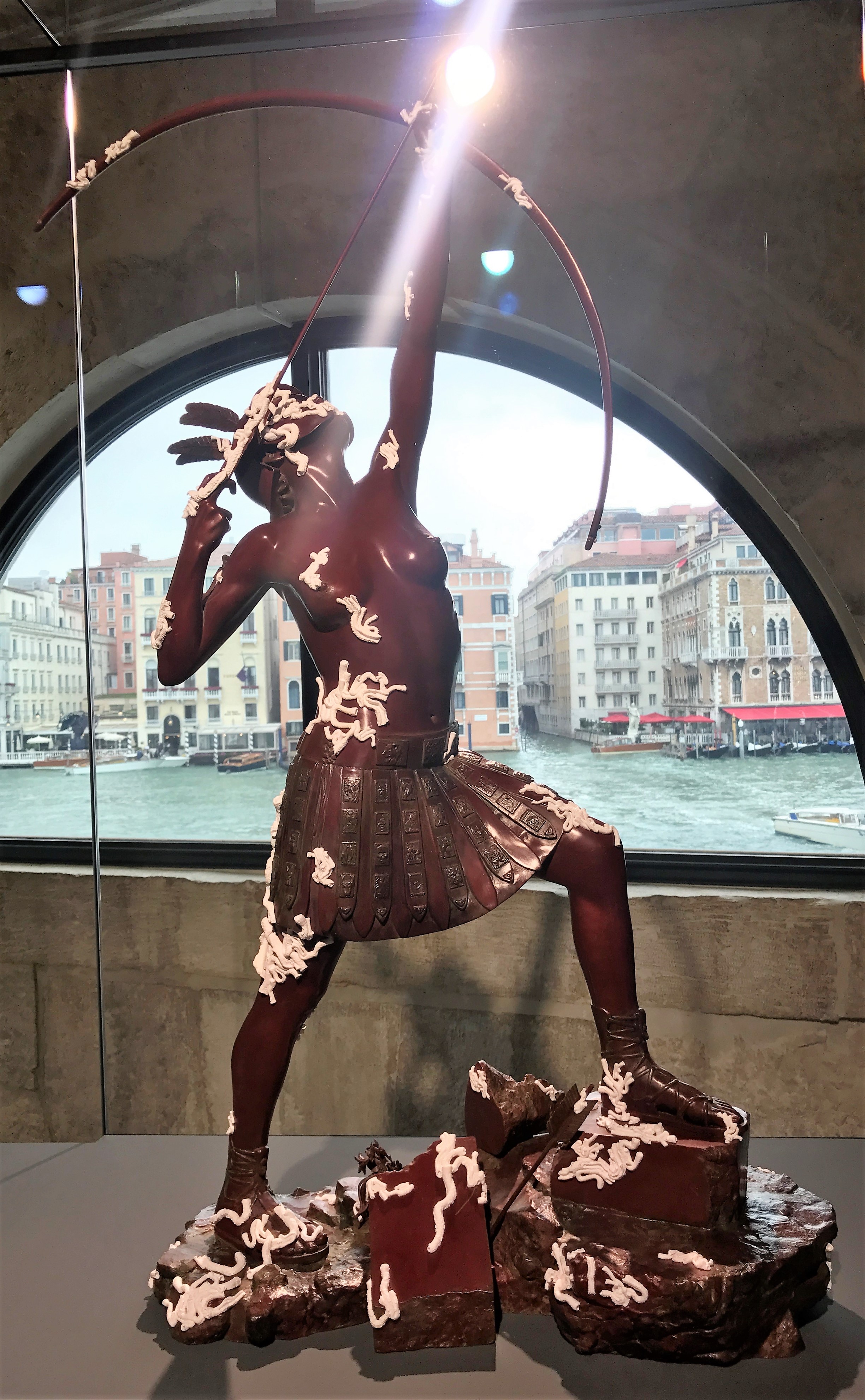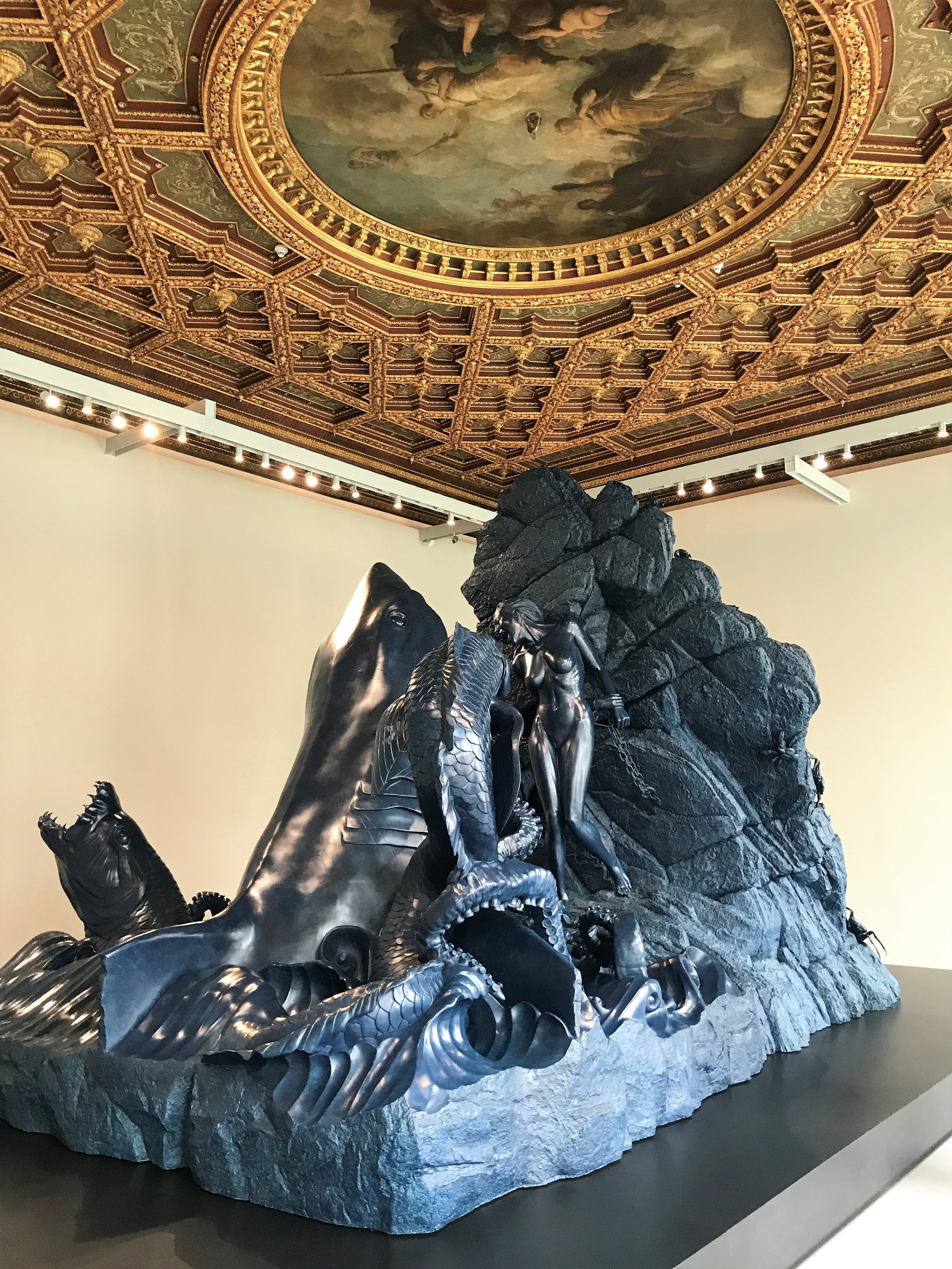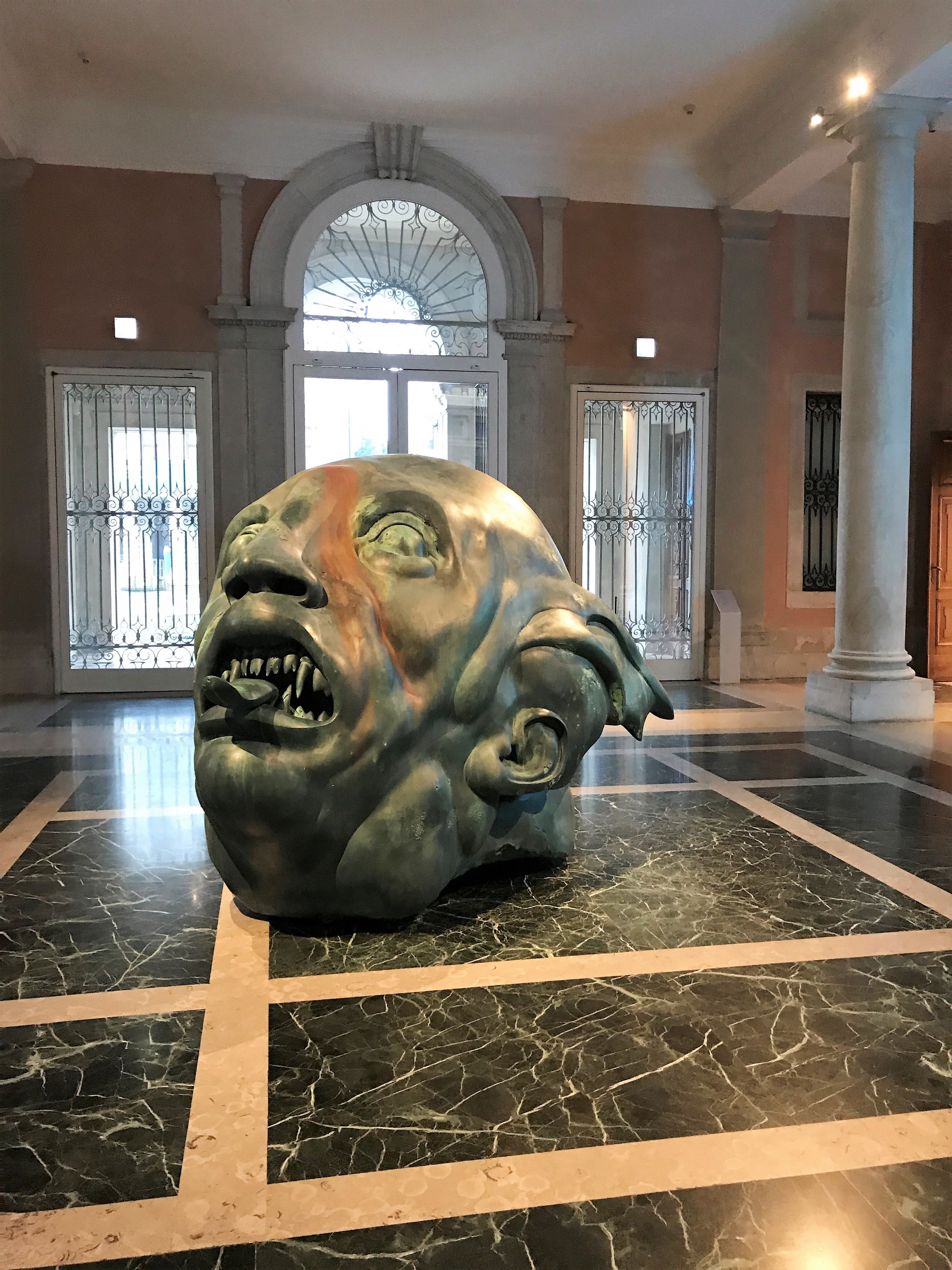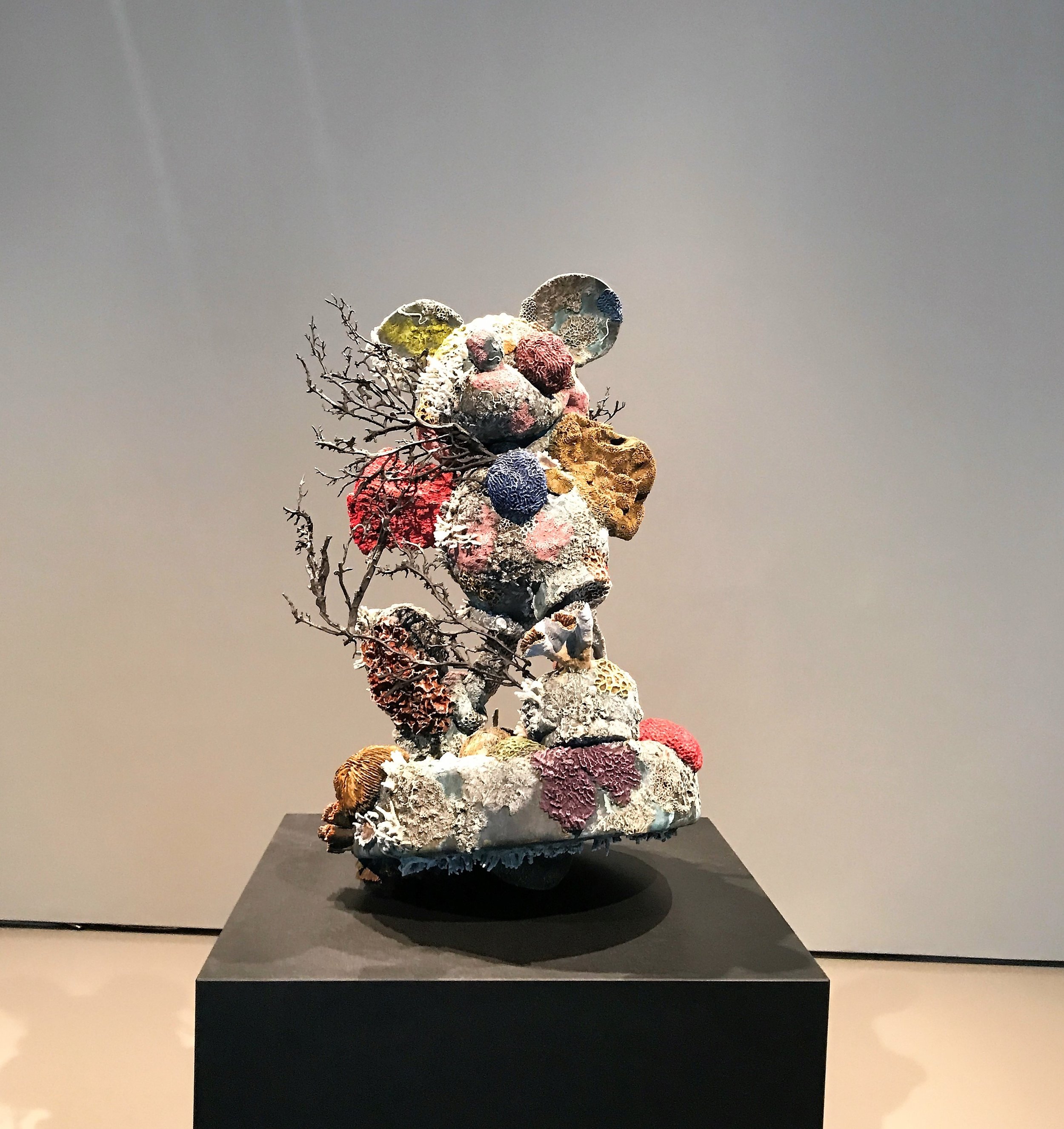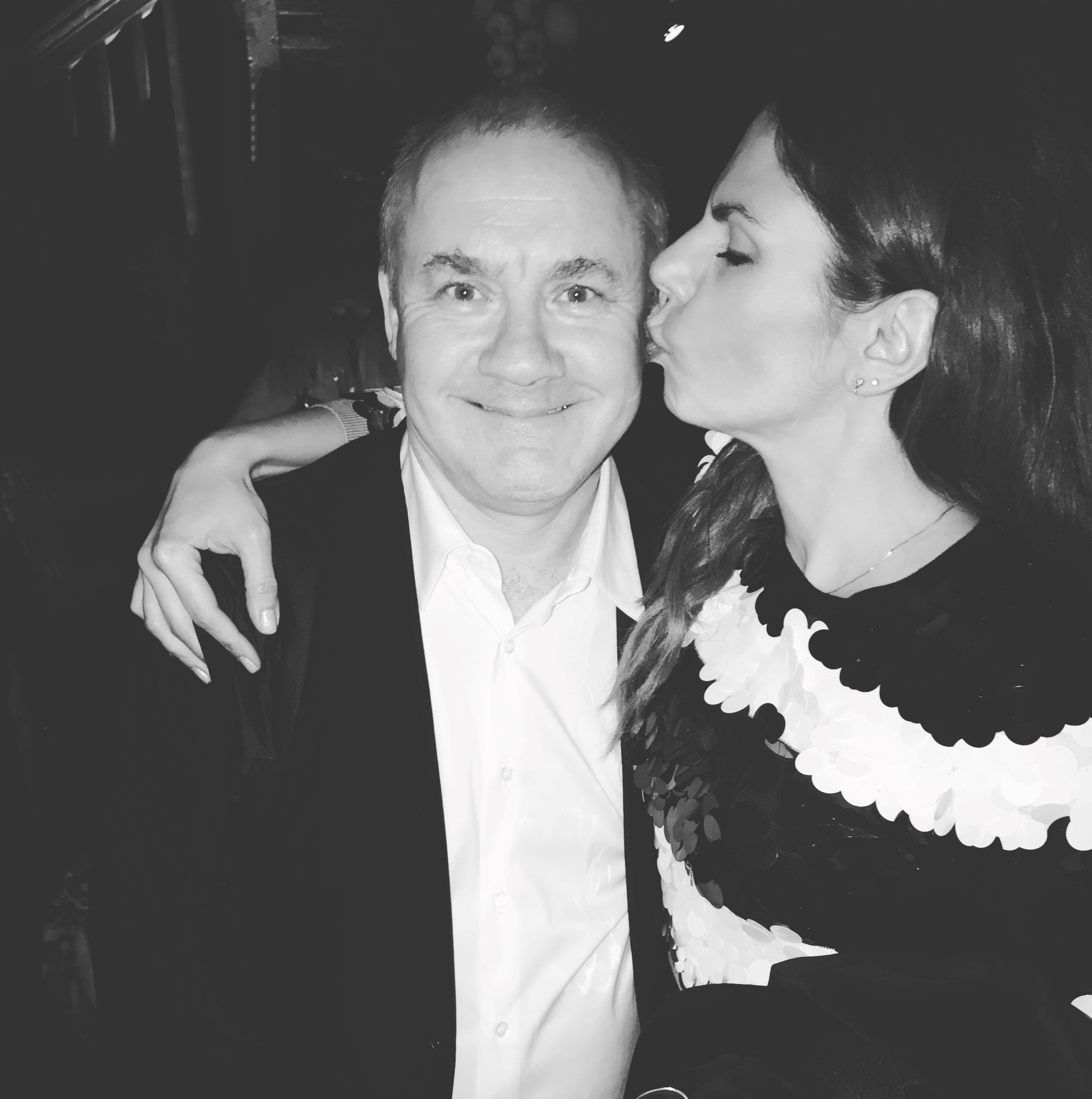Venezia
Arguably the oldest international art exhibition of its caliber, La Biennale de Venezia has been running since 1894 and has increasingly become a point of reference for the art world to look at new and established talents who are forging ahead in aesthetic and conceptual topics. But the truth is that during the Biennale the entire city (and the water too) become canvases for art installations of all sorts, making the exploration of Venice an overwhelming and exhilarating task all at once.
Ian Davenport's installation at Giardino
I was very fortunate to attend the preview of the 57th Biennale this past May and my only wish is that I would have had more time. However, in the very intense three and half days I was there, I didn’t waste a second. To have an art biennial in a city like Venice is by itself a treat for the eyes, the mind and the soul.
The entrance of the Hungarian Pavilion by Gyulia Varnai
For this edition, the curator is Christine Macel, who is also the Chief Curator of the Centre Pompidou in Paris and someone who truly gave a fantastic spin and fresh angle to the Biennale. Starting with the name of this edition, “Viva Arte Viva”, Macel is going against the grain of macho, highly conceptual, boring and often-times apocalyptic art that I’m so sick of seeing. She brought an extraordinary group of 120 artists who are looking at life and our humanity -individually and collectively- and manifesting it in their works with wonderment, colors, passion, joy and sensuality. There are many women artists, and in the Arsenale, the overall energy feels feminine but not unbalanced.
Geta Bratescu in the Romanian Pavilion
The Cafe at Giardino, designed by Tobias Rehberger
The sections curated by Macel are split into nine pavilions all intertwined and interrelated. However, the first two are located in the Giardino, surrounded by the country pavilions, and the rest are at the Arsenale, which is quite extensive. The first section is the Pavilion of Artists and Books which gives a glimpse of what it is to be an artist and why. What propels art-making nowadays? Or even a few decades ago? What about the entities and personalities surrounding an artist? My favorites in this pavilion were the John Waters acrylic-on-wood-and-aluminum series with ironic slogans like “Study Art for Prestige or Spite,” which shows Waters' own dilemma on the reasons why he decided to become an artist. I also felt intrigued and moved by the Olafur Eliasson installation where refugees, asylum seekers and immigrants have an opportunity to learn lamp fabrication with eco materials provided by Eliasson, thus creating an interactive, collaborative and socially engaged environment.
One of John Water's works in the Pavilion of Artists and Books
Inside the Olafur Eliasson installation at the Central Pavilion at Giardino on the preview day
The Pavilion of Joys and Fears is the only dark one, and it explores the relationship between the individual and his own existence. The installation I liked most in this area was Andy Hope 1930’s (a pseudonym used by German artist Andreas Hoffer) where a combination of film, drawings and portraits of a masked character in different iterations alluded to the reality of humans who never fully disclose themselves to others.
Andy Hope 1930’s installation
Andy Hope 1930’s installation
Following is the Pavilion of the Common, where the theme is around community - the togetherness of human beings. I loved Rasheed Araeen’s geometric structural wood cubes painted in vibrant colors that could be moved around by the audience to create their own variations, as well as Lee Mingwei’s installation full of threads on the walls and tables, where visitors would bring damaged clothing items to be fixed by the artist or his helpers and engage in conversation while at work.
Rasheed Araeen's installation at Arsenale
Lee Mingwei's installation
The Pavilion of the Earth has a focus on environmental utopias and ideas that have been discarded or pushed forward in defense of the planet. My favorites here were the work of the Japanese collective “The Play”, a small house outdoors by the lagoon, and the beautiful installation of fabric panels and rubber trunks by Thu Van Tran, which brings awareness to the deforestation of countries once rich in natural resources but depleted through colonization by foreign powers.
Installation of "The Play" outside Arsenale
Thu Van Tran's installation
The Pavilion of Traditions looks at the past and how artists have turned distant concepts often associated with religion or morality and analyzed them as a dialogue between the old and the recent. The installation I enjoyed most in this pavilion was the one from Russian artist Irina Korina, who is known for scrutinizing post-Soviet society and watching social change affect the landscape. For Venice, she created an immersive cage with neon and kitschy funereal wreaths covered in saturated colored plastic flowers, mimicking a cell where luxury meets poor taste.
Irina Korina's installation
The Pavilion of Shamans is a nod to the spiritual, the unknown, the turning point that comes to human beings through meditation and prayer. Here my highlight was Ernesto Neto’s woven work suspended from the ceiling. Adopted from the structures created by the Huni Kuin Indians of the Amazon, it invited spectators to go inside, touch, and spend time thinking, dreaming and sometimes debating the changes that our society needs.
Ernesto Neto's woven structure inside the Arsenale
My favorite pavilion was the Dionysian Pavilion, which shamelessly celebrates the female body and its sexuality, pleasure, and life itself. The gorgeous paintings and Caftan-covered sculptures of Hugette Caland, the super sensual-shaped canvases of Zilia Sanchez, and the erotic photographs of Eileen Quinlan’s own body in her shower taken months after she gave birth to her second child were definitely very special.
Hugette Caland's mannequins
Zilia Sanchez's shaped canvases
Eileen Quinlan's photographs
The natural connection to the Dionysian Pavilion had to be The Pavilion of Colors, which had a lot to do with the emotional and neurological reactions attributed to color. Sheila Hicks’s “Escalade Beyond Chromatic Land” is the most incredible work in this area, a large mountain of about 550 feet in length by 20 feet in height formed with pure pigmented bales creeping up the walls of the Arsenale almost as if they were a rainbow in 3D that kept people walking around it, touching it, and talking about it.
Sheila Hicks’s “Escalade Beyond Chromatic Land”
The last section is the Pavilion of Time and Infinity which intended to answer what it means to have art as a metaphysical experience. The stunning installation of Liu Jianhua, whose porcelain pools strategically placed on the floor interspersed with mirrors create the illusion of the porcelain pools disappearing or changing shapes, was the high point of this sector.
Liu Jianhua's porcelain pools
In Giardino, where the most concentrated amount of country pavilions reside, I was taken by the humor of Cody Choi and Lee Wan for the Korean Pavilion, especially the giant neon outside mimicking the sign of a love motel crossed with Times Square billboards. The dark theatre with white sculptures and a fun take on social media by Grisha Bruskin and Sasha Pirogova was a highlight in the Russian Pavilion, Jana Zelibska's projection of the sea with illuminated plastic swans floating on top signifying the passage of time won me over in the Czech Republic Pavilion, and the stunning Egyptian Pavilion awed me with a film by Moatz Nasr projected in a dark space, floors covered in sand, walls giving the impression of being made of clay and strategically punctured with ears that protrude gently, as if eavesdropping.
Cody Choi and Lee Wan for the Korean Pavilion
Grisha Bruskin for the Russian Pavilion
Jana Zelibska for the Czech Republic Pavilion
Moatz Nasr's film inside the Egyptian Pavilion
In the area of Arsenale I enjoyed the Chilean Pavilion by Bernardo Oyarzun, who gathered 1,500 Mapuche Indian masks and raised them with rods at an eye level while encircling the dark space with a line of LED signs installed on a loop with 6,909 Mapuche names. Finally, in the Philippines Pavilion, represented by Lani Maestro and Manuel Ocampo, are paintings and neon depicting colonialism, the idea of “the other,” and the influences from Europe that have changed the way the Filipino people work, think and live.
Bernardo Oyarzun for the Chilean Pavilion
Lani Maestro and Manuel Ocampo for the Philippines Pavilion
Outside the Biennale there were many parallel shows and performances, including the spectacular show of Michelangelo Pistoletto at the Basilica of San Giorgio Maggiore called “One and One Makes Three” that includes many different mirror installations, sculptures, silkscreens and both newer and earlier works of Pistoletto’s brilliant career. The common thread of the show is our humanity, regardless of religion, race or nationality.
Vik Muniz presented “Afterglow: Pictures of Ruins” at the Gallery of Palazzo Cini, a solo show of sculptures and photographs inspired by paintings in the great Venice lagoon tradition and the masterpieces from the Vittorio Cini Collection.
Vik Muniz's solo show at Palazzo Cini
The Prada Foundation, hosted in a palazzo overlooking the Grand Canal where construction was finished in 1728, is moody and dark inside, with a grand staircase and the most incredible frescoes painted on the ceilings. The current exhibition is a highly conceptual show of three artists: Alexander Kluge, Thomas Demand and Anna Viebrock, and it juxtaposes theatrical sets, films and photographs in the interiors of this super imposing space.
The much maligned and criticized comeback solo show of Damien Hirst at both locations of the François Pinault foundation Palazzo Grasi and Punta della Dogana “Treasures from the Wreck of the Unbelievable” is actually pretty spectacular and puts Hirst at the center of fantastic storytelling using massive sculptures (the largest one is more than 250 feet tall), lightboxes, carvings, busts, film, objects and more. It took the artist ten years to put together this massive project that takes over more than 54,000 square feet on both locations. I thought this was a truly magical show and while I can see why people want to rip Hirst apart, I still think he always leaves with the last laugh.
In the Peggy Guggenheim collection, besides the great collection that she amassed and left behind, including a few Max Ernst sculptures (he was married to Peggy at some point) and many Braques, Picassos, Brancusis and Dalis, there is a very intimate and special solo show of the surrealist Rita Kernn-Larsen who was friends with Peggy in the 1930s and whose work isn’t quite as well known in the US.
Rita Kern-Larsen at the Peggy Guggenheim Foundation
As an honorable mention, Lorenzo Quinn fabricated and installed two massive sculptures modeled from his son’s hands and placed inside the water and against the façade of the Ca’ Sagredo Hotel, as if holding it from falling. The perfect location right in front of the historical fish and fruit market, between Ca’ D’Oro and Rialto Bridge, makes this installation unmissable. The work is called “Support” and it is intended to bring light to the severe climate change issues that are eroding Venice.
Lorenzo Quinn's "Support"
La Biennale runs until November 26, 2017 and as much as I’d want to return to Venice and see it all over again, plus all I missed, I know I’m better off building my longing and expectation for 2019.



























